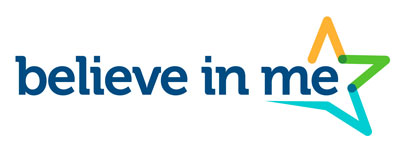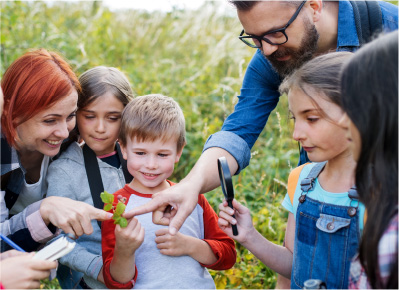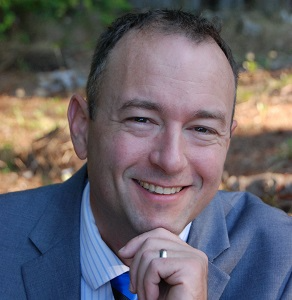When I started writing this blog, I thought I would focus on how education can help marginalized youth. After conducting some research, it became clear that education isn’t empirical. Even the finest primary, secondary, and post-secondary educational institutions can produce bad results. We have learned that great educators are the primary catalyst for positive results in their students’ lives, not the school’s reputation, the aggregate quality of the teachers, and, indeed, not the dollars spent. This blog will explore the factors that can make the difference for marginalized students.
Students and Teachers Put In the Joint Effort Required for Academical Success
Modern entertainment has delivered many dramatizations of the academic success stories of marginalized students. As a result, many people believe that all teachers at a low-income school should have the magic touch. One example is how Jaime Escalante was portrayed in the movie Stand and Deliver. The very long hours and hard work put in by both Escalante and the students were missing from the screen. It was far more than just his charisma and innate ability to reach young people that helped them to succeed. Another misnomer is that a change in environment is seen as the key to success when marginalized kids find themselves in a top school, and everything works out via academic osmosis.
Unlike the movie version of The Blind Side, which only covered it in passing, much of Michael Lewis‘ 2007 bestselling book focused on Michael Oher’s struggle to meet stringent NCAA educational requirements. It took a lot of effort from Oher, his tutors, and his teachers. Along the way, his scores increased dramatically, demonstrating he always had the ability. Oher is an individual success story. He had a long collegiate and NFL career, but his experiences point out two glaring issues: the education system, including his teachers, failed him throughout most of his life. His athletic potential was the catalyst for educators to invest time and effort in him, which should have happened regardless of his athletic prospects.
Identifying Children Who Need More Help At School
There is no master checklist or single archetype to help identify struggling students like Michael Oher. In an educational context, a struggling student is any child that requires extra attention, help, and resources from the school, teachers, and administrators specifically for that student to not only keep up with peers but succeed.
While there is no one checklist, modern educators often use ACEs (Adverse Childhood Experiences) as critical indicators of future academic and social struggles. These indicators identify kids experiencing any of the following categories of abuse, neglect, or loss before age 18:
- Physical abuse by a parent
- Emotional abuse by a parent
- Sexual abuse by anyone
- Growing up with an alcohol and/or drug abuser in the household
- Experiencing the incarceration of a household member
- Living with a family member experiencing mental illness
- Domestic violence
- Loss of a parent
- Emotional neglect
- Physical neglect
A landmark study, begun right here in Spokane, WA, in 1994, found that children with four or more ACEs had:
- increased risk for smoking, alcoholism, and drug abuse
- increased risk for depression and suicide attempts
- poor self-rated health
- 50 or more sexual partners
- greater likelihood of sexually transmitted disease
- challenges with physical inactivity and severe obesity
Identifying children with one or more ACEs as early as possible helps educators craft strategies for each individual, which brings me to:
Educators Are Key To Support Academical Success
To learn how these tools can be an effective way to help students, I turned to my longtime friend Heidi. She’s an educator with eight years of experience as a public school teacher and administrator in elementary and junior high schools with high percentages of marginalized students. In addition to ACEs, one of her key indicators is the percentage of students granted free or reduced-price lunches. Her professional experience has been at schools with well over fifty percent of students in those categories. In her words, coming from a culture or cycle of generational poverty poses obstacles that students of affluent backgrounds don’t have to deal with. In contrast, this only sometimes means a student will struggle. In her experience, it’s a powerful and reliable indicator in the aggregate.
Much like the movie depiction examples shared earlier, the overall theme of my conversation with Heidi was one of effort. Educators must take the time to get to know each student individually. When it’s clear the child has barriers to success, it is important to show empathy and create a clear roadmap for success. It is important to keep pushing the proverbial flywheel, following up, and putting in the time. Teachers must also keep students from using shortcuts or different methods to keep up with their peers, as this brushes their problems into the future. Recognizing every individual’s role and redirecting those talents in a helpful, productive way helps guide each student in their path to believe in themselves.
What Tools do Educators Have for Children Needing Their Support?
The old paradigm of ‘here’s the standard, either meet it or fail’ is long gone. Not too long ago, it was believed that not everyone would make the cut—the world needs ditch diggers and farmhands, too. Heidi explained that educators now have tools and methodologies to help recognize kids needing their help the most. Not every school or district uses these same methods, but she has seen demonstrable success with the following:
Advancement Via Individual Determination (AVID): AVIDs help educators to reevaluate their beliefs and expectations around student potential and learn and practice activities that transform classrooms and campuses. In addition, it provides schools with direct support to regional teams, data tracking, planning guides, and self-assessments. Some great numbers of this practice is an average of 90 percent of AVID graduates attend college, and 89% of those students are still in college after two years.
Social Emotional Learning (SEL): A methodology that helps students of all ages comprehend their emotions better, fully feel them, and demonstrate empathy for others. These learned behaviors help students make positive, responsible decisions, create frameworks to achieve their goals, and build positive relationships with others. Students who participated in SEL programs saw an 11 percentile increase in their overall grades and better attendance.
Multi-Tiered Systems of Support (MTSS): A proactive framework that helps educators provide educational and behavioral strategies for students with various needs. The critical components of MTSS include:
- Universal screening of all students early in the school year
- Tiers of interventions that can be amplified in response to levels of need
Tier 1: 75%-90% of students—proactive classroom students
Tier 2: ~10%-25% of students—small group teaching/help
Tier 3: <10% of students—individual teaching/help
- Ongoing data collection and continual assessment
- Schoolwide approach to expectations and supports
- Parent involvement
One can see how these various tools overlap and work with one another to help ensure positive outcomes for struggling kids.
Stories of Support and Success
Heidi mentioned two students in particular (names and details omitted here). Both came to her as middle school students with many of the ACEs above.
Student #1 came from a minority Micronesian background with extreme poverty and no college-educated family members. Once given direction and attention from Heidi and other educators, she excelled, first becoming ASB President and later graduating as Valedictorian from high school. Naturally, the student went off to college. Heidi mentioned that another tool, the IGNITE Peer Mentorship model, was instrumental in this young woman’s educational success.
Student #2 came from a Native American background, was raised by his widower father in poverty, and lacked the tools and experience to succeed and be prepared for college. Through AVID, he was finally challenged and excelled. As a high school student, he is now pursuing an athletic scholarship to a college to be determined.
Making The Difference in Education for Marginalized Kids
Believe in Me is supporting programs that are giving that extra help and focus for academic success to marginalized students in Washington, Oregon, and North Idaho. These organizations offer staff and students additional training, space, time, and resources to thrive in their educational path. Some examples are:
Slingshot: IDEAS framework program to embed in college/career readiness programs at four regional high schools. Slingshot offers training and coaching for staff and students, supporting students’ developing purpose and direction for work and life.
Embrace Washington: The Education Program is an intensive educational tutoring program designed to remove barriers to academic success for foster children.
Communities in School of Spokane County: The 21st Century Enrichment Program is helping kids and youth develop strong social-emotional skills. It is also assisting kids in having their physical and mental health needs met and feeling safe in a culturally sensitive environment.
Lumen Public School: The Collaborative Problem-Solving program is a skill-building and brain-building approach where all staff and students can learn skills, heal their brains and grow academically and professionally.
College Success Foundation: This Coaching Program helps youth from low socioeconomic backgrounds complete college. They provide life skills coaching, community building, career exploration, and financial aid support through 1:1 and group meetings, workshops, webinars, online resources, and ongoing communications.
Boys and Girls Club of Spokane County: The Keystone program work with the Central Valley School District to put our program in place for those youth who need extra support with online learning.
The Isaac Foundation: ISAAC’s Clubhouse has three separate components that work together: 1) Clubhouse, a twice-a-week after-school program for grades 6-12. 2) Discovery Sat is a free monthly program that offers special needs children a place to join facilitators for themed activities that build relationships and foster a sense of inclusion. 3) Studio Events with monthly events allow community members and those with special needs to connect and explore interests through fun activities, events, and workshops.
In this blog, I shared how students’ success depends on great educational practices. We have identified some children who may need extra help in school and discussed the tools educators have to support students’ academic success. Educator stories of support and success show us what is possible when there is a joint effort between teachers and students. Finally, Believe In Me is a program that can bridge the education gap for marginalized kids and make a positive difference in their lives. Whether volunteering with time or donations, get involved today to build strong students’ confident in their academic abilities! If you’re an educator, you also bring hope – “A teacher affects eternity: he can never tell where his influence stops” Henry Adams. It is our collective responsibility to ensure that no student suffers from an unequal education than others receive. Together we can accomplish more than any one individual ever could. Let us be people of action who choose to stand up for meaningful change by creating stronger educational resources and better outcomes for all kids






